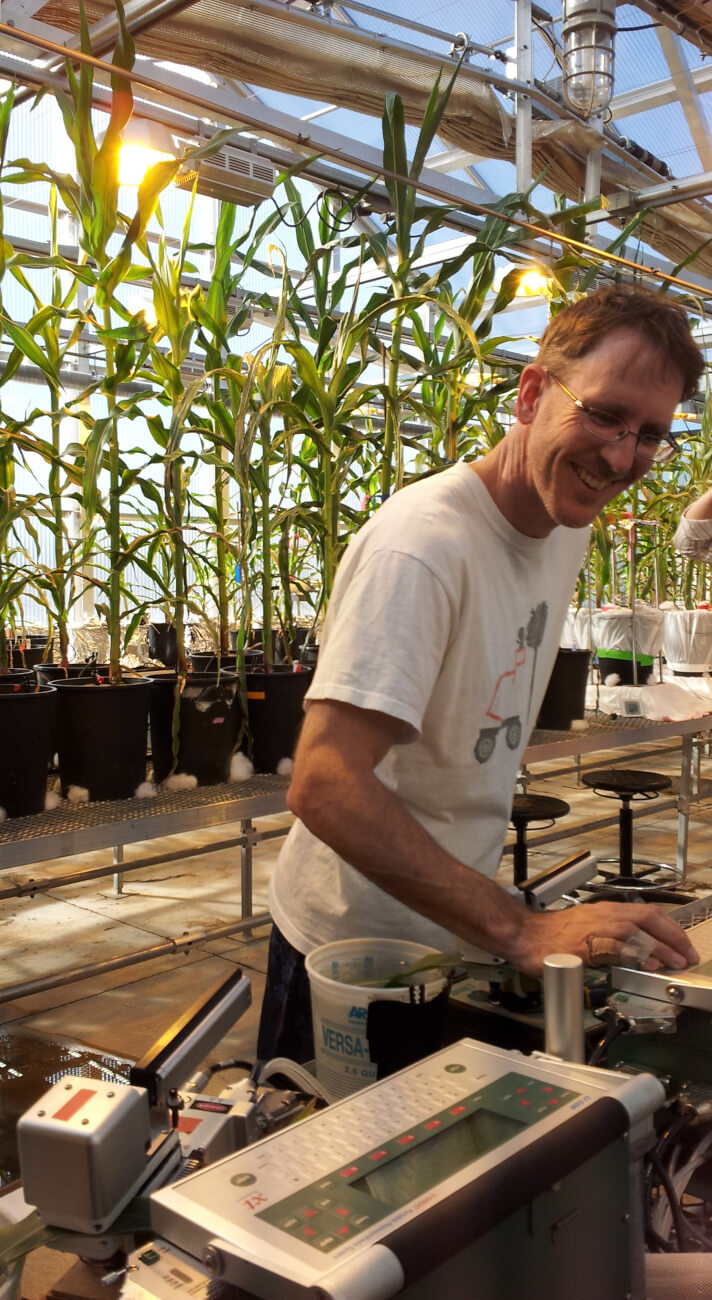Visiting plant physiologist shares his research to improve plant hardiness in an uncertain climate
Visiting plant physiologist shares his research to improve plant hardiness in an uncertain climate
Visiting plant physiologist shares his research to improve plant hardiness in an uncertain climate
8/26/2019

While the planet is facing heat waves, rising sea levels, species extinctions, and other effects from the changing climate, plant physiologist Sean Gleason is looking at these issues from a much closer perspective: the function of water transport in plants.
Gleason, who works with the Agriculture Research Service within the U.S. Department of Agriculture and visited the University over the summer, said understanding this process and the characteristics of xylem, the tissue responsible for transporting water throughout plants, could contribute important information toward feeding an increasing global population in uncertain and extreme climate conditions.
In a recent seminar titled “Plant Water Transfer Traits” hosted by the Western Pacific Tropical Research Center under the College of Natural & Applied Sciences on July 25, 2019, at the University of Guam, Gleason presented to a room full of CNAS researchers and graduate students.
“With the increases in temperature and population, precipitation gets harder to predict,” he said. “As arid places get drier, plants find it more difficult to thrive. If we can discover a way to help plants transport and utilize water more efficiently, people can remain in these affected areas with agriculture to support them.”
With a dearth of research in scientific literature on this topic, Gleason said there are many unanswered questions as to what factors influence the efficiency of water transport: To what degree will doubling xylem efficiency increase photosynthesis rates and, therefore, biomass production? Why does high xylem efficiency exist in wet environments but not in dry conditions? Are current plant hydraulic ideas being effectively transferred to other disciplines?
Gleason is working to close this gap of knowledge and welcomes other scientists to do the same.
Adrian Ares, the associate director of the Western Pacific Tropical Research Center under CNAS, invited Gleason to Guam. During his visit, Gleason instructed CNAS graduate student Pution Mendiola on the procedure for measuring plant root pressure, a highly specialized, little known process. He also met with scientists from the WPTRC.
“Having lived in Hawaii and Kosrae, it was a real pleasure to be back in the islands,” Gleason said. “I greatly enjoyed meeting WPTRC researchers and seeing them so enthusiastic about the projects they are working on.”
The WPTRC explores topics important to the wellbeing of the environment and people of the region. For more information on WPTRC research, please visit, https://www.uog.edu/wptrc
